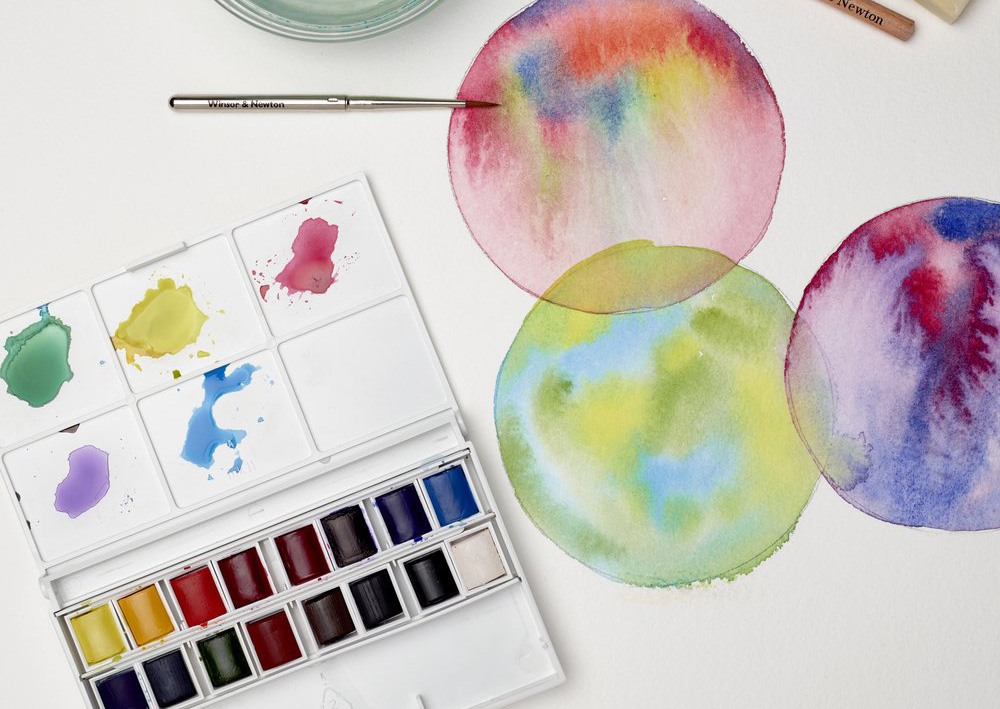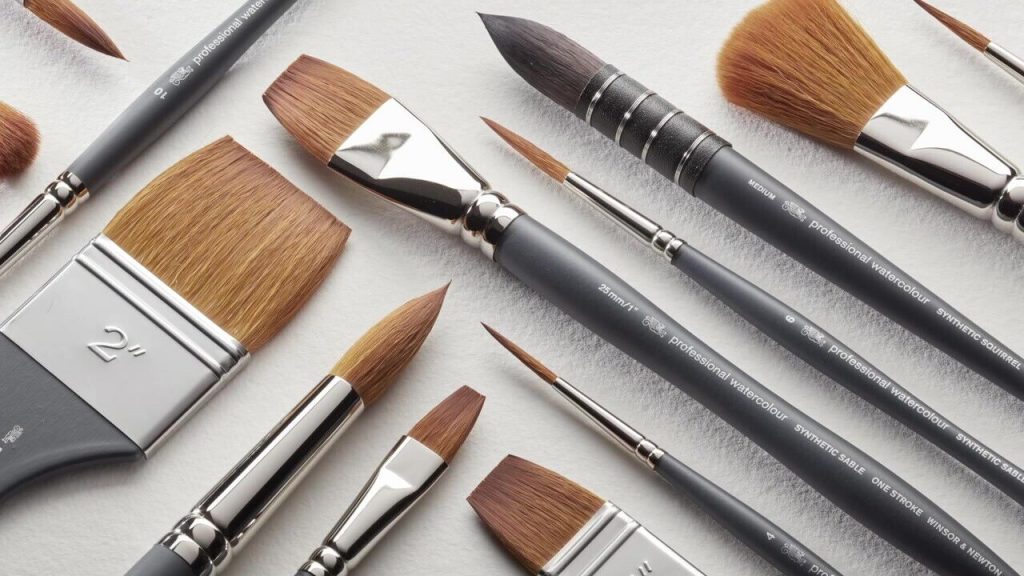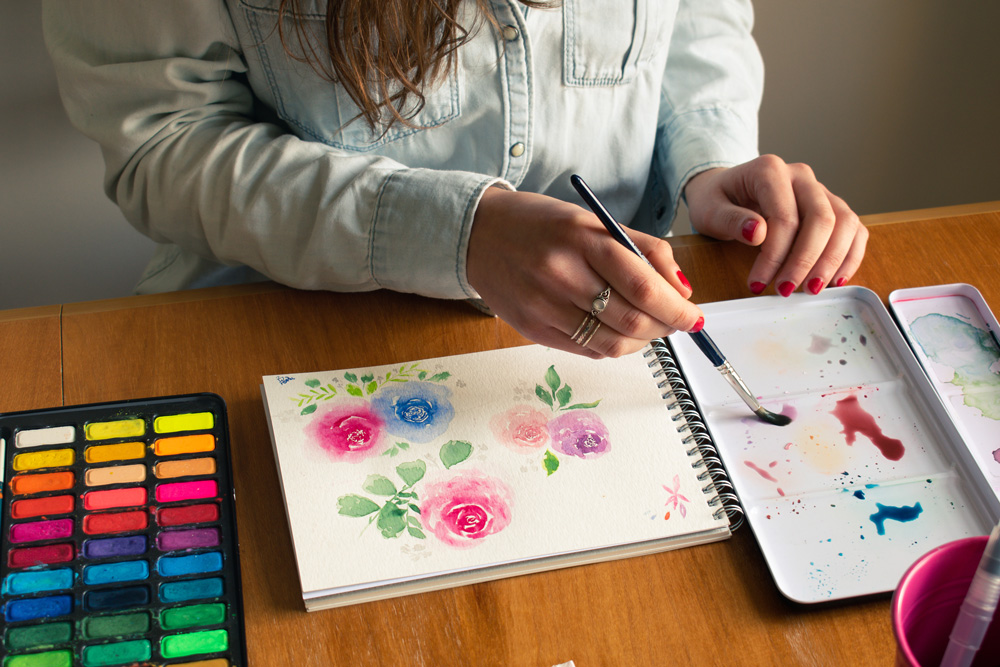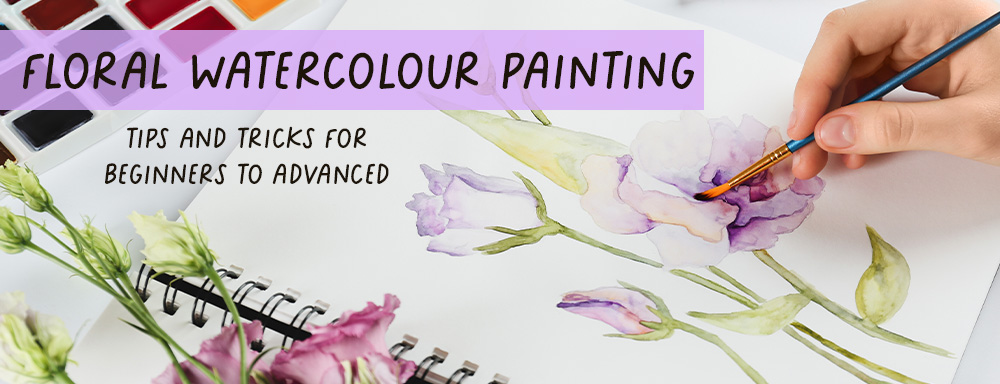Floral Watercolour Painting Tips and Tricks: A guide for beginners and intermediate artists.
Floral watercolour painting can be a joyful and fulfilling hobby that lets you capture the delicate beauty of flowers in a splash of colours. Whether you’re a newbie or already have some experience, here are some tips to help you create gorgeous floral watercolours.

The Basics: Get Your Supplies
Before diving into the fun stuff, let’s talk about the tools you’ll need:
Choosing your paints
Get yourself some good quality paints. Student-grade paints are fine for starters, but artist-grade paints will make your colours pop. Brands like Winsor & Newton, Daniel Smith, and Art Spectrum are awesome choices.
My personal recommendation for beginners who still want a good quality paint I would recommend the Winsor & Newton Cotman range. The pigment in this paints is great and they’re available in liquid paint tubes or solid paints in convenient travel packs.
If you’re looking to level up the quality of your watercolour paints you could start to look at the Winsor & Newton Professional range.

The best paint brushes for floral watercolour painting
When it comes to painting floral watercolour artworks, the right paintbrush can make all the difference. Selecting the best brushes for this delicate and expressive medium involves considering the specific needs of capturing the intricate details and soft textures of flowers. Here’s a guide to help you choose the perfect brushes for your floral watercolour masterpieces.
Round Paint Brushes: The Floral Artist’s Best Friend
Round brushes are the go-to choice for floral watercolour painting. Their versatile shape, with a pointed tip and a broad belly, allows for a variety of strokes, from fine lines to broad washes.
Sizes 4, 6, and 8 are particularly useful. A smaller size, like 2 or 0, is perfect for detailed work such as painting the veins of leaves or the delicate edges of petals.
Flat Paint Brushes: For Bold Strokes and Washes
Flat brushes, with their square ends and broad bristles, are excellent for laying down large areas of colour and creating bold, sweeping strokes.
They are particularly useful for background washes and for adding broader strokes of colour to flower petals and leaves.
A good range of sizes from 1/2 inch to 1 inch will give you the flexibility to cover different areas effectively.
Detail Brushes: Precision and Finesse
For the tiniest details that make your floral paintings come to life, detail brushes are essential. These small, fine-tipped brushes (sizes 0 and 1) allow you to add intricate details such as the delicate filaments of a flower’s stamen or the tiny veins on a leaf. Detail brushes made from synthetic fibers offer the precision and control needed for these small, precise strokes without the worry of splaying or losing shape.
Specialty Brushes: Exploring Creative Techniques
While round, flat, and detail brushes form the core toolkit for floral watercolour painting, exploring specialty brushes can add unique effects to your work.
Rigger brushes, with their long, thin bristles, are excellent for painting stems and long, flowing lines. Fan brushes can be used to create interesting textures and patterns that mimic the natural complexity of floral structures. Moreover, mop brushes, with their large, soft heads, are great for applying broad washes of colour and for blending.
Additional Tools
Palette: For mixing your perfect colours.
Water Containers: Two jars—one for rinsing brushes and one for clean water.
Paper Towels or a Cloth: For blotting brushes and fixing mistakes.
Pencil and Eraser: For sketching your flowers lightly before painting.

Tips for Beginner Floral Watercolour Painting
Water Control
Water control is key in watercolour painting. Practice these techniques:
Wet-on-Wet: Wet the paper and then add paint for soft, dreamy edges.
Wet-on-Dry: Apply wet paint to dry paper for sharp, defined edges.
Mix It Up
Play around mixing colours on your palette and directly on the paper. It’s like a magic potion — experiment and see what beautiful hues you can create!
There are lots of videos out there on watercolour colour mixing if you feel you need a little guidance here.
Keep It Simple
Start with basic flower shapes. Focus on capturing the overall form before adding the fancy details. Tulips, daisies, and simple roses are great for starters.
Layer It On
Floral watercolour painting is all about layers. Start with light washes, let them dry, and then add more details. This gives your flowers depth and dimension.
Beginner Floral Watercolour Painting Tutorials
If you’re looking for a little inspiration and guidance as a beginner these floral watercolour painting tutorials might do the trick! Here’s a few great video tutorials for beginners.
Tips for Intermediate Painters
Advanced Brush Tricks
Dry Brush Technique: Use a brush with hardly any water to add texture and fine details.
Lifting: Use a damp brush or paper towel to lift colour off the paper for highlights and to fix goofs.
Dive Into Details
Spend some time studying and painting individual flower parts. Focus on petals, leaves, and stems to understand their structure and how light plays on them.
Negative Painting
Paint around the subject to define it. For example, paint the spaces between petals and leaves to make them stand out.
Play with Composition
Create more complex compositions by combining multiple flowers and adding background elements. Try glazing (applying thin, transparent layers of colour) to add depth and contrast.
Textures Galore
Experiment with things like salt, plastic wrap, or sponges to create fun textures and effects. Sprinkling salt on wet paint can create a beautiful, speckled texture that works beautifully for floral watercolour painting. Ideal for petals and leaves.
Practice makes perfect!
Floral watercolour painting is an exciting journey of creativity and experimentation. Whether you’re just starting out or looking to develop your skills, practice is key. Don’t beat yourself up if your flowers aren’t perfect straight away. Like any art form floral watercolour painting takes time to master. Spend time experimenting with different techniques, studying real flowers, and refining your skills. Remember, the magic of watercolour lies in its unpredictability and fluidity, so embrace the unexpected and enjoy the creative process.
Happy painting!
If you like this article you may also like this one about DIY projects for Spring.



